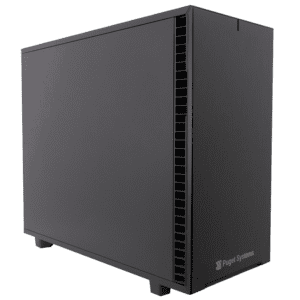Fedora 22 is full of new goodness like kernel 4.0 and gcc 5.1 and yes, you can install and run CUDA on it! It’s not officially supported but I did manage to get it working!
5 Ways of Parallel Programming
Modern computing hardware is all about parallelism. This is because we essentially hit the wall several years ago on increasing core clock frequency to speedup serial code execution. The transistor count has continued to follow Moore’s Law (doubling every 1.5-2 years) but these transistors have mostly gone into multiple cores, vector units, memory controllers, etc. on a single die. To utilize this hardware, software needs to be written to take advantage of it, i.e. you have to go parallel.
NVIDIA CUDA GPU computing on a (modern) laptop
Modern high-end laptops can be treated as desktop system replacements so it’s expected that people will want to try to do some serious computing on them. Doing GPU accelerated computing on a laptop is possible and performance can be surprisingly good with a high-end NVIDIA GPU. [I’m looking at GTX 980m and 970m ]. However, first you have to get it to work! Optimus technology can present serious problems to someone who wants to run a Linux based CUDA laptop computing platform. Read on to see what worked.
NVIDIA CUDA install on CentOS 6.6 [SOLVED]
If you have done a fresh install of CentOS 6.6 or “updated” to it from a 6.5 install and you are setting up NVIDIA CUDA 6.5 you may be having trouble with a failed build of the nvidia-uvm kernel module. Read on for a fix …
Install CUDA and PGI Accelerator with OpenACC
I’m going to walk you through a basic install and configuration for a development system to do CUDA and OpenACC GPU programming. This is not a detailed howto but if you have some linux admin skills it will be a reasonable guide to get you started. We’ll do a basic NVIDIA GPU programming setup including CentOS 6.5, CUDA development environment and a PGI compiler setup with OpenACC. The most interesting part may be the OpenACC setup. OpenACC is a relatively new option for GPU programming and allows for a directive (pragma) based coding model.
NVIDIA Jetson TK1 CUDA performance
Here’s a quick look at CUDA performance on the NVIDIA Jetson Tegra K1 developer board.
